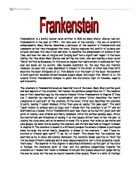Safie, the daughter of the Turkish merchant is appalled by her father’s betrayal of Felix and by the Islamic oppression of women he endorses. Therefore, she decides to escape from the clutches of her father and flees from Turkey to Switzerland, seeking Felix. This incidence gives a sense of M.shelley’s oblique reference of looking at Turkey within the dimensions of the “east”. Moreover, when the readers are first introduced to Safie ,the description of her as a “lady dressed in a dark suit covered with a thick black veil” makes one aware of a culture very different from the west. It is for this that critic Kornisaruk goes to the extent of calling Safie as being “oriental”. Hence, echoing Edward Said’s theory of the orientalism as now one witness’s construction of Safie as the “Other”.
M.shelley at the same time is quick to shift her stance of Turkey-the east, established in reader’s mind as a place which culturally occupies a lower place in hierarchy. This is because she now portrays the product of east-Safie in a positive light. This is evidenced by frequent parallels of Safie with Eve of Paradise Lost who is chaste,pure. Also, the author consciously decides to choose the name Safie meaning “wisdom” which is symbolic in itself. Safie’s desire to acquaint herself with the language which becomes a mean to break the cultural barrier justifies to her attribute of wisdom. It also reveals her as a person who is class conscience as she wishes to be merged within the upper strata of the society.
Moreover, Safie emerges as the only independent well educated, self supported, wisdom imbibed woman in the novel. By doing so, the author not only questions the position of women in the 19th century but also brings into focus her rejection of east as a supposedly hierarchically inferior place as discussed earlier. It is because of her alternative role model identity that well renouned critic Rubinstein decides to call her “subtly androgynous” combining the standard feminine “angelic beauty” with a masculine energy.
Yet, the author decides the disappearance of Safie and De Lacey’s family giving them little involvement in the plot. Thus, establishing that such characters had no or little place in the harsh world of 19th century Europe experienced by M.Shelley. Therefore, justifying the novel as a realistic fiction. Finally, one can conclude, it is from her own mother that Safie learns “to aspire to higher powers of intellect and an independence of spirit”.So, flouting her father’s “tyrannical mandate” against marrying Felix.Indeed, it’s for this that critic A.K. Mellor notes Safie as “the incarnation of M.Wollstonecraft in the novel”.







